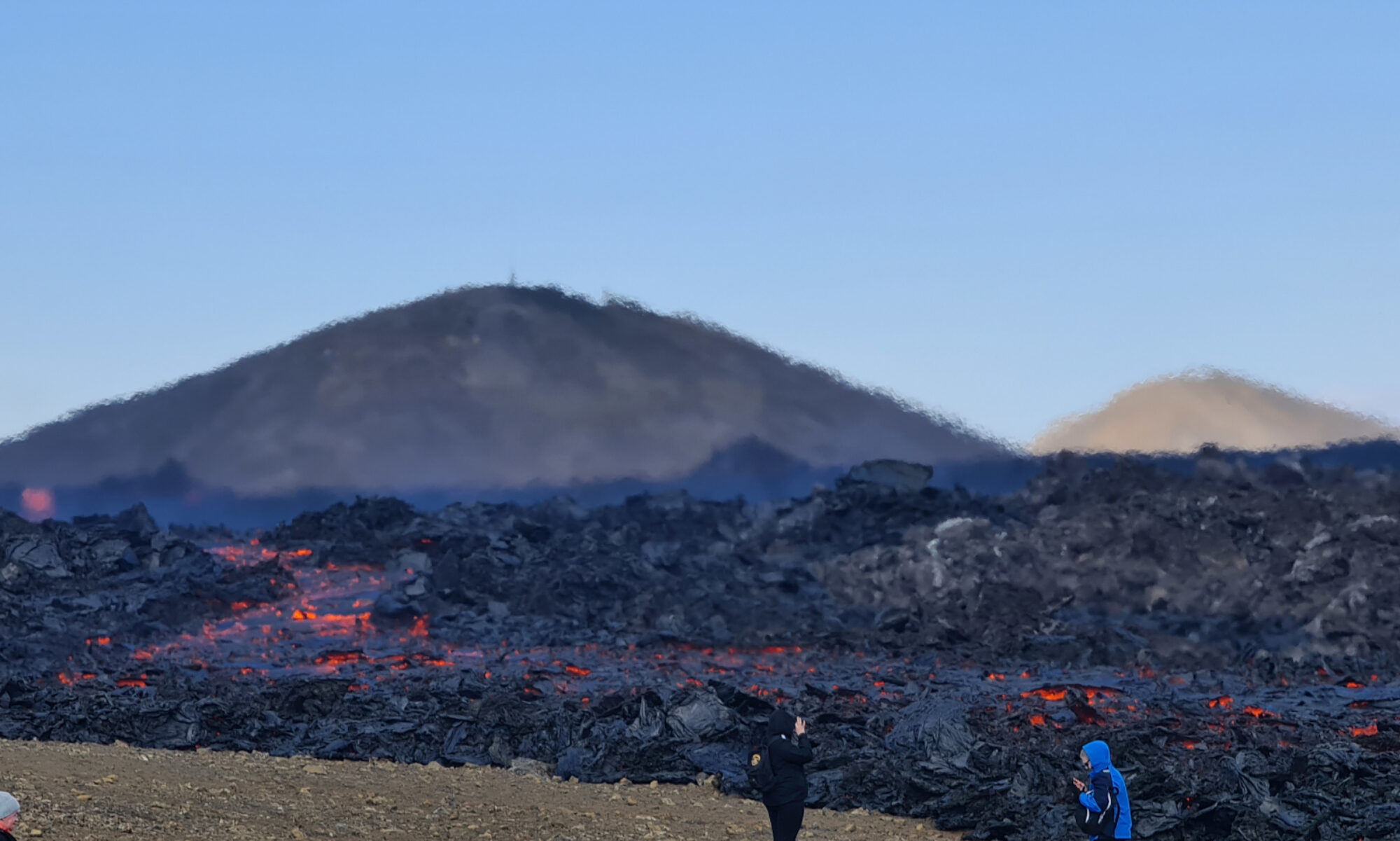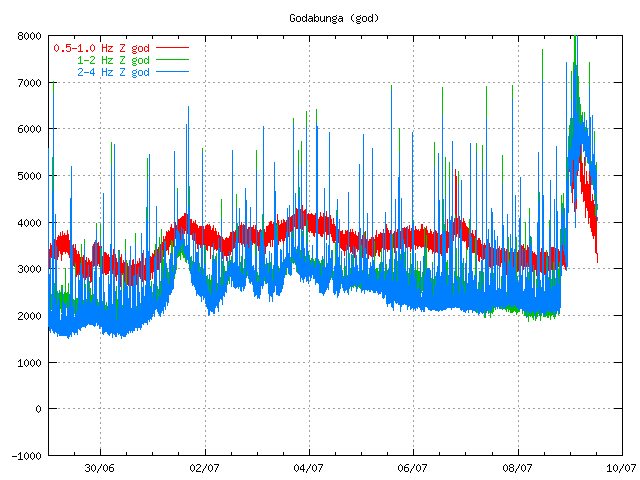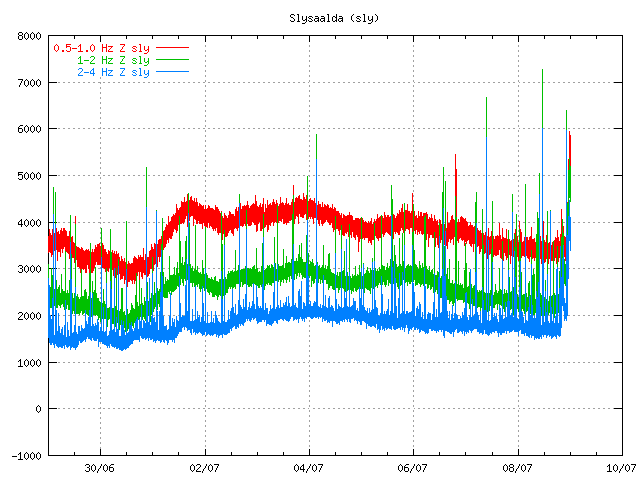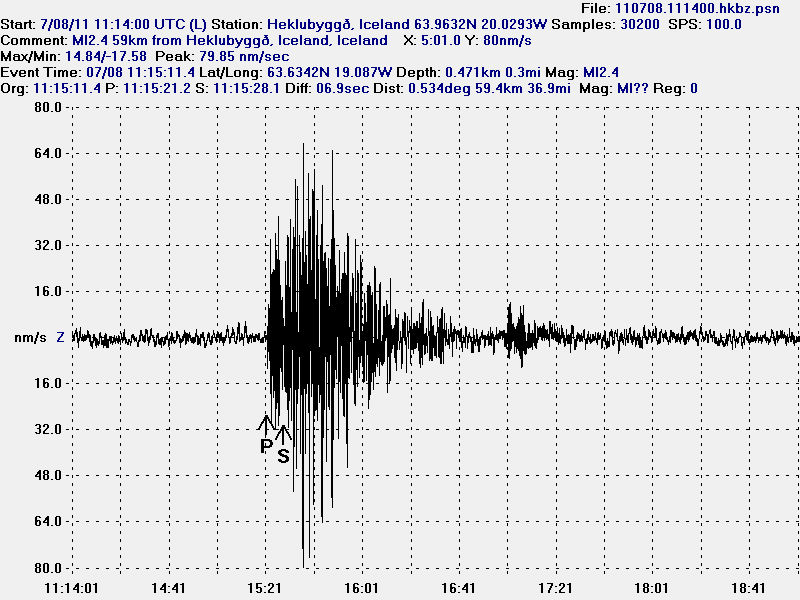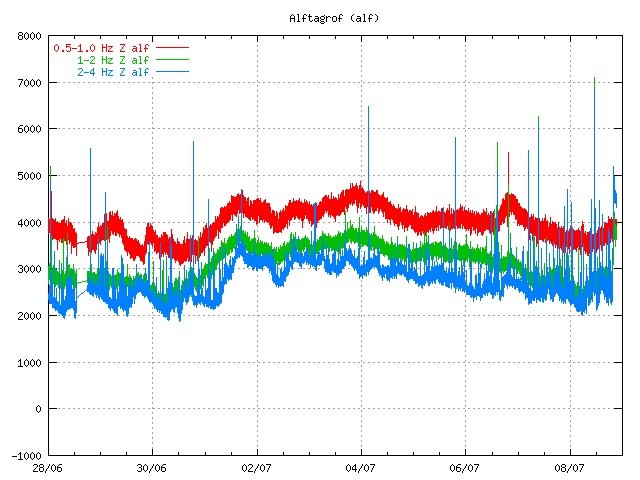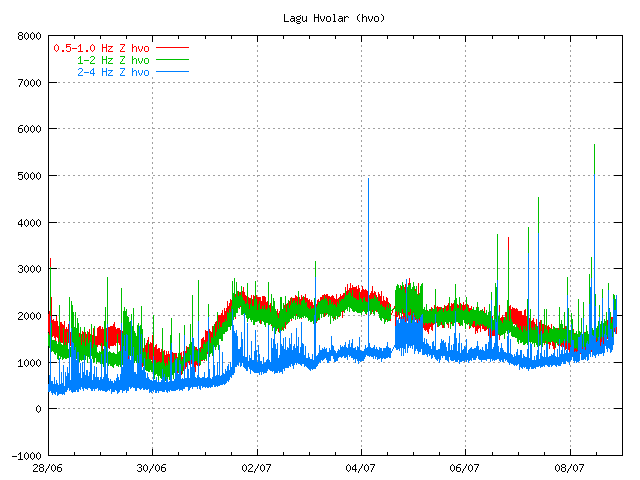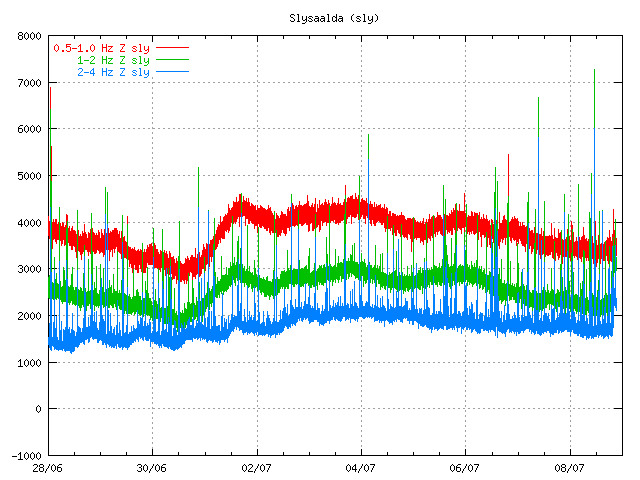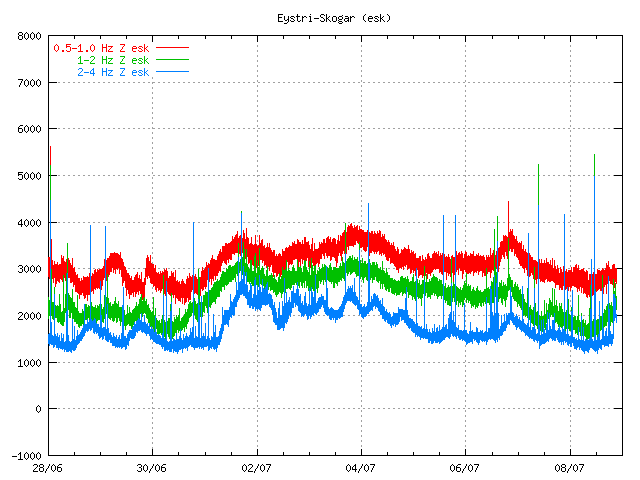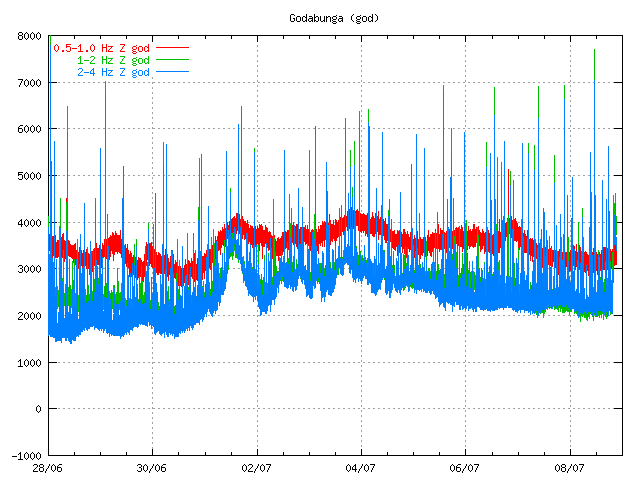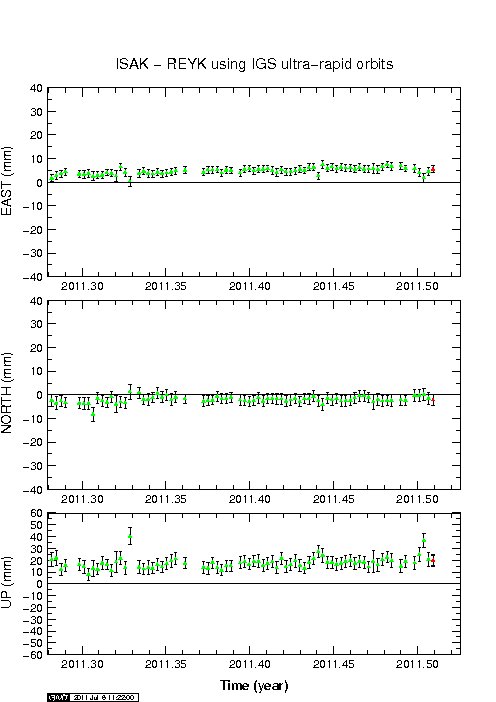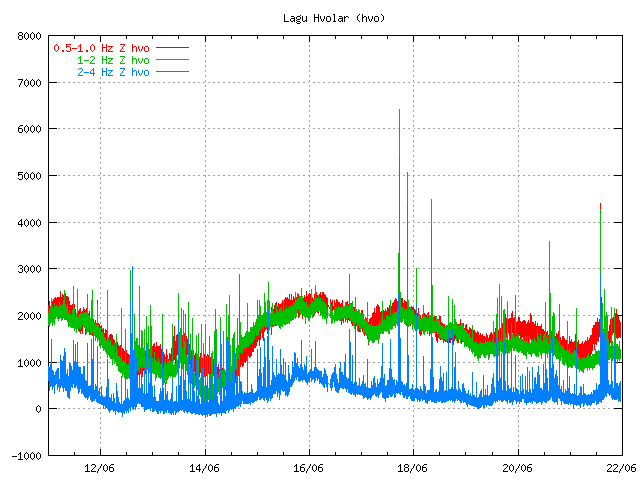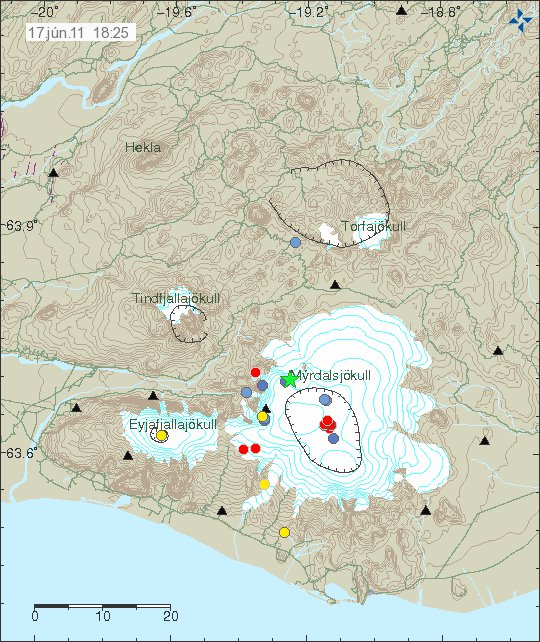It seems that on many SIL station around Katla volcano that the harmonic tremor has gone mostly down to background levels, on other stations it continues to drop. This are mostly SIL stations that are at the most distance to the source of the area that this minor eruption took place during the night. But at the moment this seems to be over. The main source of the activity appears to be where the eruption took place in the year 1918, or so scientists think at the moment.
According to the news there was an flood wave around 04:00 UTC during the night. When the water meters did show an rise of 5 meters suddenly. Soon after that the bridge over Múlakvísl river was lost in the glacier flood. This did close the main road 1 in this area, that area of the main road is going to remain closed for the next few weeks while they fix the damage done in the flood (build an new bridge).
Even if the harmonic tremor seems to be dropping. This does not seem to be over, as an earthquake activity did resume from around 13:00 UTC in the Katla. Since then the earthquake activity seems to have been building at slow rate.
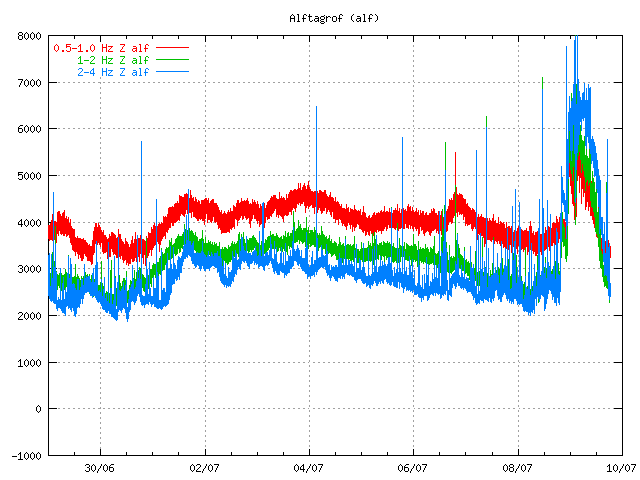
Tremor plot at 18:23 UTC. The tremor is dropping. It also shows that earthquakes are taking place (spikes the tremor chart). Copyright of this picture belongs to the Icelandic Met Office.
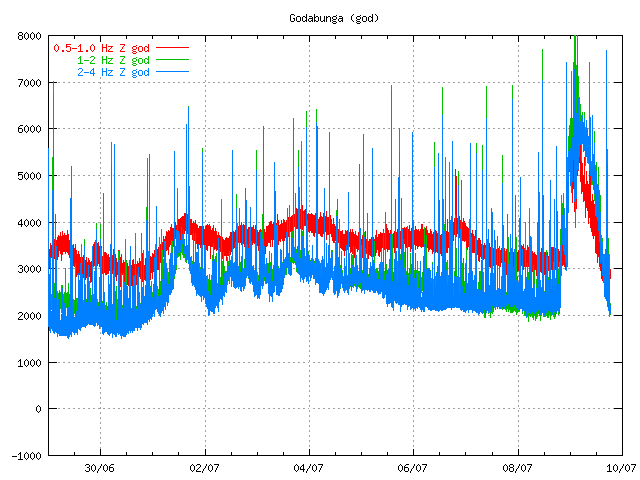
Tremor chart from Goðabunga at 18:24 UTC. Copyright of this picture belongs to the Icelandic Met Office.
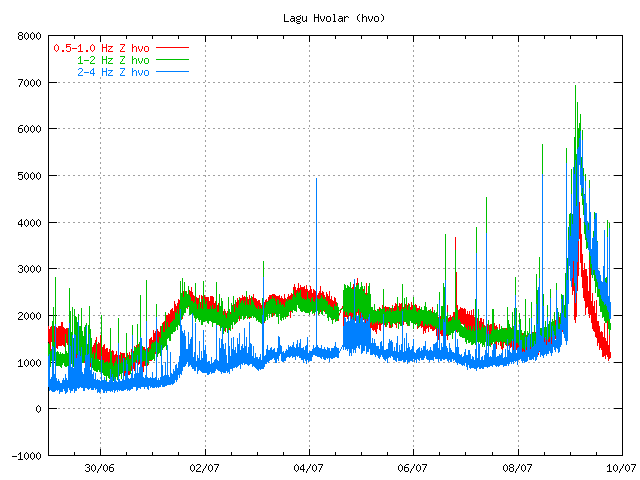
Dropping harmonic tremor on Lágu Hvolar. Earthquakes appear as spikes here. Copyright of this picture belongs to Icelandic Met Office.
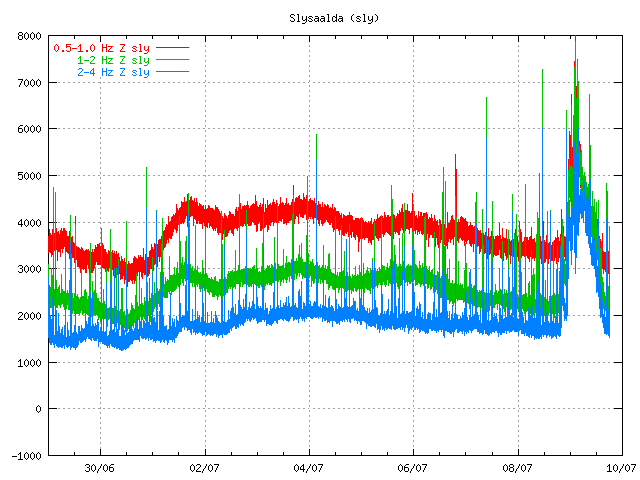
Dropping tremor and earthquakes as before. Copyright of this picture belongs to Icelandic Met Office.
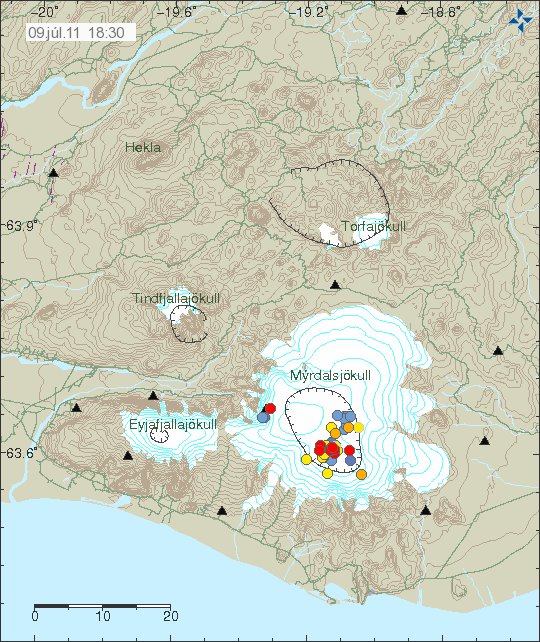
Earthquakes as they are tonight. The southern part of the caldera is having earthquake swarm, even if it is just an small one. Copyright of this picture belongs to Icelandic Met Office.
I am waiting too see how this develops. Something larger might happen. But nothing else might happen for an while in Katla volcano. The only thing that can be done is too wait and see what happens in Katla volcano.
Icelandic News about the road damage.
Meiri skemmdir en talið var (Rúv.is, Picture, Icelandic)
